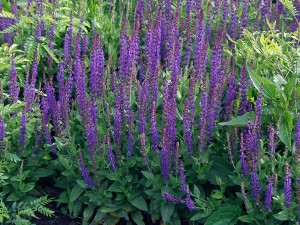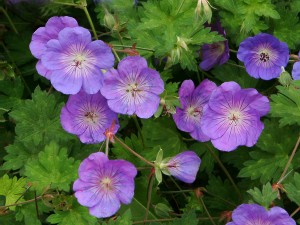
Submitted by Mary Jo Burza

With careful attention to deadheading you can keep your perennials looking their best all summer. Deadheading is a simple technique. It is the removal of spent flowers and flower stalks to encourage repeat blooms or to enhance the plants general appearance. If you wonder why deadheading will encourage a plant to bloom again, it is important to understand a little about a plant’s biology.
Let me describe deadheading from the plants point of view. The plants entire purpose is to produce seeds. If you prevent seed formation by removing the spent flowers, you trick the plant to produce more flowers. If you remove the spent flowers, this diverts the plants energy from creating seeds to growing more flowers.
I use three different methods to deadhead plants. Gardeners long before me have coined the terms snip, shape, and shear to describe each of the three methods for deadheading.
Snipping is the most common method of deadheading. It is the removal of individual flowers or flower stalks. It works best for plants with a few flowers that bloom over a long period of time, rather than all at once. To deadhead perennials by snipping, cut where the flower stalk ends and just above the first set of leaves. The new flowers will grow from the leaf axils, which is why it is important to cut above these leaves.
Perennials to Snip for Rebloom: Tall Phlox, Salvia, Lupine, Yarrow, Iceland Poppies, Lady’s Mantle, Baby’s Breath, Dahlia, and Verbena.
Perennials to Snip to Improve Appearance: Astilbe, Bergenia, Hosta, Peony, Lambs Ears, Orienatal lilies.
Shaping is the best method for perennials that bloom all at once like lavender. The tool that I prefer to use for shaping is a pair of hedge shears. When I shape a plant I cut it back by one third, removing all of the flower stalks and some of the leaves. As I shape a plant, I try to mimic the plant’s natural growth form. Many plants like lavender benefit from shaping. Shaping creates a dense plant with lots of flowers.
Perennials to Shape: Lavender, most Artemsias, Sage, Santolina, Blue False Indigo, Cushion Spurge, many Penstemons.
I tend to shear to the ground any plant that gets leggy. Shearing plants to the ground may sound a bit extreme, but it is the best way to treat leggy plants. It works on plants that are dense and covered

with blooms, but tend to crumble under the weight of the seeds. After you shear a plant, give it extra water. If you do, within a week you will have new growth and in two to 3 weeks you will have a mound of fresh compact foliage.
Perennials to Shear: Hardy Geraniums, Lungwort, Brunnera, Catmint
Not all perennials require deadheading. Many plants have seed heads that are a source of food for birds and other wildlife during the fall and winter months. In addition, many seed heads are attractive and provide an element of winter interest. Perennials that I recommend that you don’t deadhead are: Japanese Anemone, Blue Mist Spirea, Snakeroot, Russian sage, Rudbeckia, Tall Sedums, Coneflower, and Ornamental Grasses.
Author Mary Jo Buza is a landscape designer and has more than 20 years experience creating, installing and maintaining landscapes. For more information on a custom landscape design, or consulting visit, call Mary Jo at 360-923-1733 or check out the website www.maryjobuza.com



















































